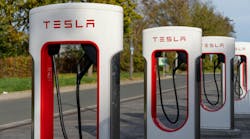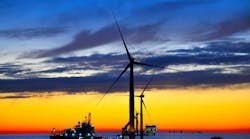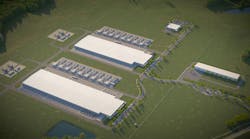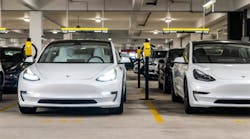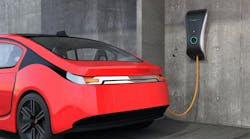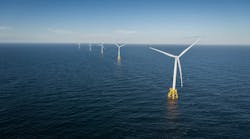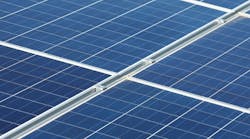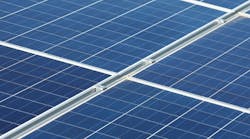While the advisors and cabinet members President-elect Trump is selecting for his administration worry environmentalists with their pro fossil fuel and anti-climate change philosophies, it’s still too early to tell what the impact of the Trump Administration may be on the renewables industries.
Post-election blog posts by the Washington, D.C.-based American Wind Energy Association (AWEA), and the Solar Energy Industries Association (SEIA) say job growth in the wind and solar fields over the past few years and the continuing influx of new commercial and utility-scale (and to a lesser degree residential) wind and solar installations have become important drivers in local and particularly rural economies.
However, some environmentalists are worried that the Trump Administration and Republicans on Capitol Hill may want to eliminate spending on clean energy research and development and revamp or eliminate existing legislation for the 30% federal Solar Investment Tax Credit (ITC) and $0.023/kWh production tax credit (PTC) in the wind energy. AWEA says on its website that the Production Tax Credit, which last December was extended through 2019, begins phasing down by 20% beginning in 2017. “Wind projects that start construction in 2015 and 2016 receive a full value PTC. For projects that begin construction in 2017, the credit is at 80% of full value; in 2018, 60% PTC; and in 2019, 40% PTC, AWEA said.
SEIA says the solar ITC, which was signed into law on Dec. 18, 2015, extends the 30% tax credit for both residential and commercial projects through the end of 2019, and then drops the credit to 26% in 2020, and 22% in 2021 before dropping permanently to 10% for commercial projects and 0% for residential projects. Fueled by these incentives, the solar and wind industries have seen lots of new construction by utilities and other entities that want to get their projects started before incentives start phasing out. According to the Energy Information Administration, through Sept. 2016 total solar generation in the United States increased 55.57% year-over-year (YOY) to 5,042 thousand-megawatt hours, and wind generation increased 17.6% YOY to 16,434 thousand-megawatt hours.
Another area of concern for environmentalists are potential cuts in funding for the Department of Energy’s (DOE) clean energy initiatives, which during the Obama Administration provided billions of dollars for research into solid-state lighting, electric vehicles, solar, wind and other green technologies. The 2017 federal budget calls for the DOE to get $5.9 billion to fund these initiatives.
President-elect Trump reportedly said on the campaign trail that he would like to slash funding on clean energy research, but post-election has said that he supports an “all-of-the-above” energy policy with a focus on oil, fracking, coal and renewables. His appointee to head the DOE, Texas Governor Rick Perry is a climate-change skeptic who during the 2012 Republican debate famously couldn’t name the DOE as one of the three federal agencies he would cut as president. But he wins some kudos from environmentalists for his support of Texas wind energy, which is by far the largest producer of wind-generated electricity in the United States.
Boosters for the renewables industry are still in wait-and-see mode when it comes to the Trump Administration’s future policies for energy efficiency. Tom Kiernan, AWEA’s CEO wrote in a Nov. 9 post at www.awea.org that his association is “ready to work with President-elect Donald Trump and his administration to assure that wind power continues to be a vibrant part of the U.S. economy.”
“An unstoppable shift to a cleaner energy economy is underway, and the fundamentals of wind energy in America are strong,” he said. “With bipartisan support for long-term policy firmly in place, and a near-record number of wind farms under construction, our industry is saving consumers money by connecting low-cost wind power to more parts of the country.
“We’re putting money in the pockets of farmers who host wind turbines, keeping the farm in the family and the family on the farm. And wind power supports 88,000 well-paying American jobs, a quarter of them made-in-the-USA manufacturing jobs. The states, where most energy policy is made, are likely to continue their clean energy policies.”
Kiernan’s post also mentioned that, “With over 80% of all wind farms in Republican-held congressional districts, we envision that the Republican leadership in Congress and the White House will want to keep our industry growing.”
